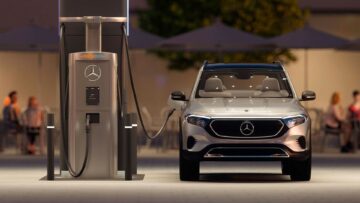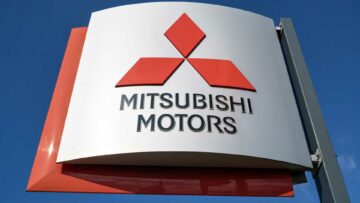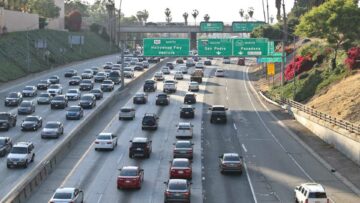In March 2024, the alliance between the Renault group and the Nissan group will be 25 years old. When signed on, it created the world’s fourth-largest automaker, with combined sales of 4.82 million vehicles.
Gradually, this new player has become more important thanks to the great successes achieved in the SUV and electric vehicle segments. Today, however, the Alliance is facing major challenges, as great as the ones it had when it was born.
Fast Growing
The accelerated growth of the Alliance is probably one of its most important achievements. In 1999 the joint operations of Renault and Nissan sold 4.82 million units. At that time, Renault had just acquired Romanian Dacia and Korean Samsung. Sales continued to grow continuously until 2005, when volume totaled 6.13 million vehicles.
Things got even better after Nissan launched the first generation Qashqai in 2007. This model rocked the markets as one of the first true crossovers, harbingers of the impending SUV boom in Europe. In 2010 the Alliance sold 7.28 million units. Deliveries then increased for eight consecutive years, to a record 10.76 million vehicles in 2018.
In that year, the Alliance was the largest automaker in the world. Part of the rapid performance in those years can also be explained by the acquisition of new brands. In 2009 the Renault group began to control Auto VAZ, the car manufacturer Lada. Circumstances allowed the House of the Lozenge to enter and dominate the Russian market, at the time among the 10 largest in the world. In 2016, Nissan did the same with Mitsubishi.
Pioneer Of Electric Vehicles, But…
Another important milestone of the Alliance in recent years has been its commitment to the transition to electric cars. Both Renault and Nissan were among the first major automakers to introduce all-electric “affordable” vehicles.
In 2010 Nissan launched the Leaf, while Renault announced the production version of the Zoe in 2012. Tesla sold just 3,000 units of its Model S that year. However, the initial blow was soon offset by the lack of new electric cars over the years. This was particularly evident as consumers in Europe and the United States began to switch from petrol and diesel to electric cars in 2017-2019.
At that point, excluding upgrades and performance enhancements, the Alliance’s EV offering was virtually the same as it was seven years earlier. Nissan introduced the second generation of the Leaf in 2017 and Renault significantly improved the specification of the Zoe.
But unlike combustion engine SUVs, which have allowed the Alliance to grow rapidly over the years, there were no electric SUVs available from either Renault or Nissan.
More Synergies And Presence In Emerging Markets
The challenges that await are not negligible. The three companies are trying to find better ways to work together. This includes greater platform sharing, especially in a more electrified automotive landscape. And there’s still a long way to go: 6 out of the top 10 alliance vendors in 2022 shared their platform with other alliance products.
In addition to this, the withdrawal from the Russian market is also a big challenge. In 2021, when Lada was still under the control of Renault, Russia was the third most important market.
Last but not least, the push towards more electric models is a must in the coming years. The captivating Nissan Ariya and the Renault Megane E-Tech are just two examples of what the three manufacturers can do.
The author of the article, Felipe Munoz, is an Automotive Industry Specialist at JATO Dynamics.
- SEO Powered Content & PR Distribution. Get Amplified Today.
- Platoblockchain. Web3 Metaverse Intelligence. Knowledge Amplified. Access Here.
- Source: https://www.motor1.com/news/662295/renault-nissan-alliance-enters-25th-year-full-of-challenges/
- :is
- 000
- 10
- 1999
- 2012
- 2016
- 2017
- 2018
- 2021
- 2022
- 2024
- 28
- 7
- 9
- a
- accelerated
- achieved
- achievements
- acquired
- acquisition
- addition
- affordable
- After
- all-electric
- Alliance
- among
- and
- announced
- ARE
- article
- AS
- At
- author
- auto
- automakers
- automotive
- automotive industry
- available
- await
- BE
- become
- began
- Better
- between
- Big
- blow
- boom
- born
- brands
- by
- CAN
- captivating
- car
- cars
- challenge
- challenges
- circumstances
- COM
- combined
- coming
- coming years
- commitment
- Companies
- consecutive
- Consumers
- content
- continued
- continuously
- control
- created
- Deliveries
- DID
- diesel
- dominate
- Earlier
- either
- Electric
- electric cars
- electric vehicle
- electric vehicles
- emerging
- Engine
- Enter
- Enters
- especially
- Europe
- EV
- Even
- examples
- excluding
- explained
- facing
- Find
- First
- First Generation
- For
- from
- full
- generation
- Go
- great
- greater
- Group
- Grow
- Growth
- Have
- House
- However
- HTTPS
- image
- impending
- important
- improved
- in
- includes
- increased
- industry
- initial
- introduce
- introduced
- IT
- ITS
- joint
- jpg
- Korean
- Lack
- landscape
- largest
- launched
- Long
- major
- Manufacturer
- Manufacturers
- March
- March 2024
- Market
- Markets
- max-width
- milestone
- million
- model
- models
- more
- most
- New
- Nissan
- numbers
- of
- offering
- offset
- Old
- on
- ONE
- Operations
- Other
- part
- particularly
- performance
- platform
- plato
- Plato Data Intelligence
- PlatoData
- player
- Point
- presence
- probably
- Production
- Products
- Push
- rapid
- rapidly
- recent
- record
- Renault
- rocked
- Romanian
- Russia
- russian
- s
- sales
- same
- Samsung
- Second
- Second Generation
- segments
- seven
- shared
- sharing
- signed
- significantly
- sold
- Soon
- specialist
- specification
- States
- Still
- SUVs
- Switch
- that
- The
- the joint
- the world
- their
- Third
- three
- time
- to
- today
- together
- top
- Top 10
- towards
- transition
- true
- under
- United
- United States
- units
- upgrades
- vehicle
- Vehicles
- vendors
- version
- virtually
- volume
- Way..
- ways
- webp
- What
- which
- while
- will
- with
- withdrawal
- Work
- work together
- world
- year
- years
- zephyrnet













